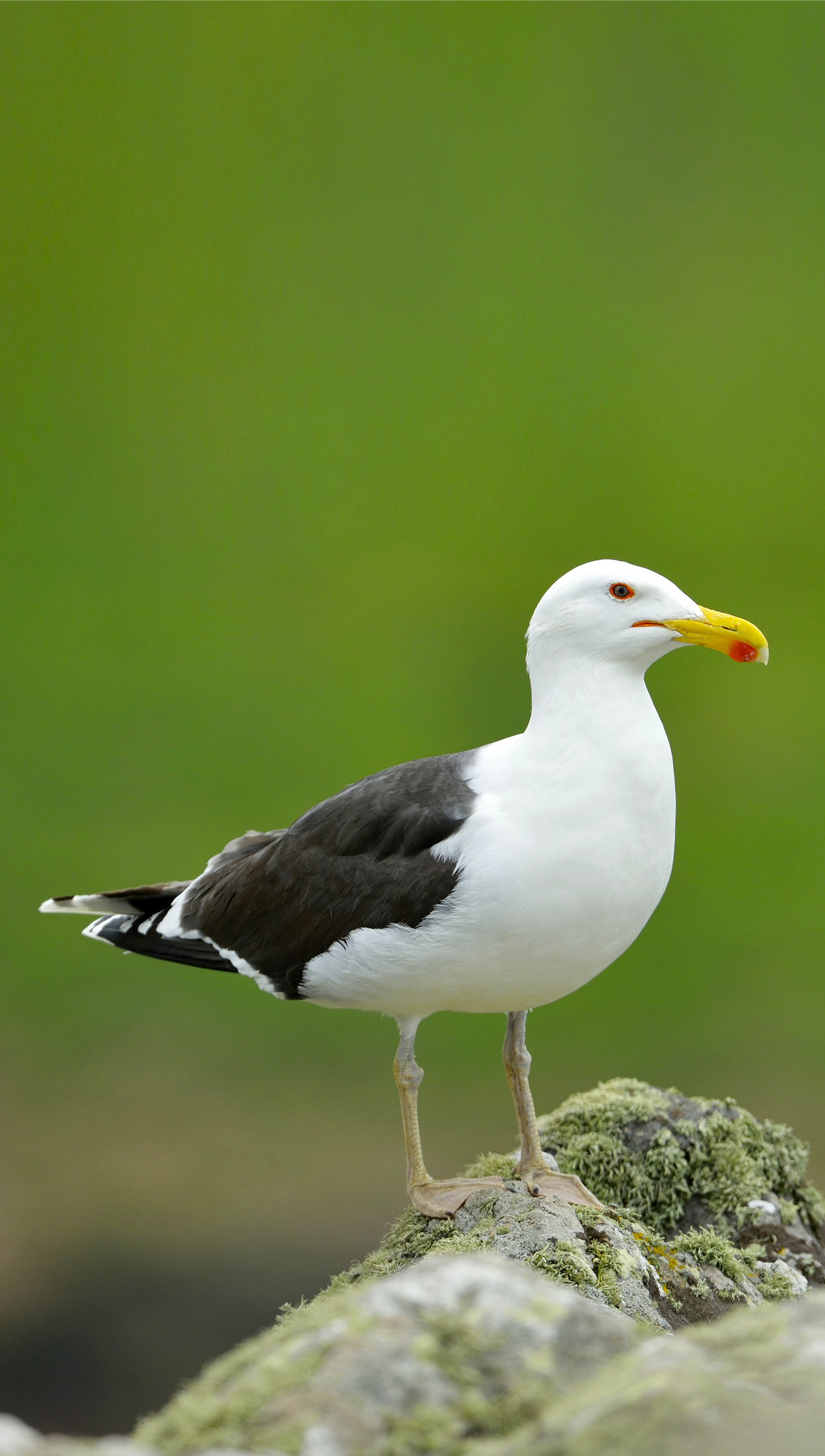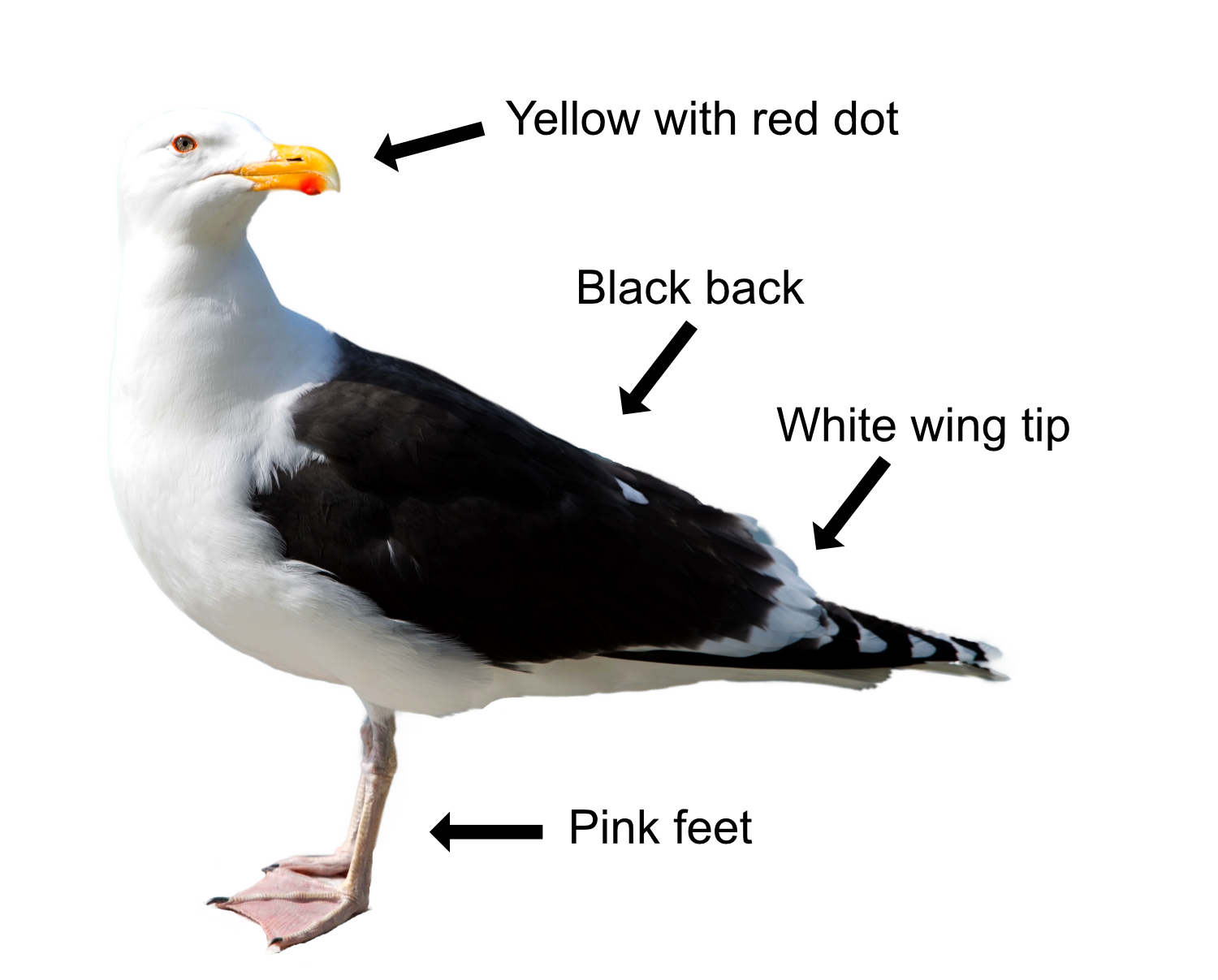
The Great Black-backed Gull is the largest gull in the world and, because of their size, has relatively few enemies, though may occasionally make a tasty snack for a White-tailed Eagle. It is a merciless tyrant that likes to throw its weight around, pinching food from other birds. They have even robbed dinner from a Peregrine Falcon! You usually see them singly or in pairs, often round fishing ports where they feed on scraps.

It is a very large, thick-set gull, with a powerful yellow bill with a red spot, a dark back (much darker back than the smaller, Lesser Black-backed Gull), a white angular head and thick neck. There is a small amount of white on the wing tips and their legs are pink. It is heavy and powerful looking in flight with its broad wings and can look quite hunched when perched. The young Great Black-backed Gull is a typical streaky grey-brown, like many young gulls, with a back bill, a chequered pattern on its back, a pale head and a pale tail. They only start to become adult black after three years and are only fully mature after five years. Their call is a gruff donkey-like "uk, uk, uk!".
The Great Black-backed Gull eats a wide variety of food by hunting, scavenging, or aggressively taking it from other birds. It dines on seabirds (especially young Puffins and Manx Shearwaters), bird’s eggs, fish, shellfish and even rabbits. Although fish is their primary food, they are equally at home on a good rubbish tip. Lacking razor-sharp talons and a curved, tearing beak, the Great Black-backed Gull relies on its size and physical strength, swallowing most foods whole. When food is too large to be swallowed, they will shake it until it falls apart. If it is covered in a hard shell, they will drop it onto rocks or hard ground to crack it open.
Great Black-backed Gulls nest on islands and cliff-tops or inland lakes and reservoirs. The nest is a mound of vegetation or seaweed. The 2-3 eggs hatch after 27 days and the youngsters are cared for by both parents. They can fly 7-8 weeks later when they become independent and menacing.
The Great Black-backed Gull came close to extinction because of persecution in the 18th century - for its feathers, which were used in hat making. In the 19th century, numbers began to recover, mainly as a result of waste seafood produced by the growing fishing industry. They are mainly resident in Britain, not going far from their breeding grounds, though birds from further north migrate here in winter with many arriving from Norway. There are 17,000 breeding pairs in Britain which swells to over 76,000 in winter. The oldest ringed Great Black-backed Gull lived for 23 years.
Their Latin name is 'larus marinus' where 'larus' means 'large seabird' and 'marinus' means 'marine' or 'of the sea'. Taken together, that makes it a big seagull. Fancy that.